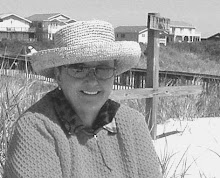Cycles in Family Building
Adoption, like everything else, moves in cycles . In 1851, Massachusetts was the first state to pass a law regulating the adoption of children. Adoption required judicial approval, consent of the child’s parent or guardian, and a finding that the prospective adoptive family was of sufficient ability to raise the child. While early adoption statutes required a finding of suitability on the part of the prospective adoption home, this requirement was more form than substance.
The need for legislation to protect the rights of children unable to speak for themselves are always on the dockets of courts nationwide. Laws involving domestic adoption vary significantly from state to state. They detail who can access to adoption records, consent to adoption, parties to adoption, putative fathers, regulation of adoption expenses, Infant Safe Haven Laws, use of advertising and facilitators in adoptive placements, statute sources and contact Information.
Legislation to protect the rights of children in foster or institutional care has often been late in appearing on the books. Most have come about after considerable lobbying by child welfare and grass root groups. 1997, President Bill Clinton signed a new foster care law, the Adoption and Safe Families Act (AFSA) which defined the length of time a child could languish in foster care without moving toward permanency either through adoption or a return to the family is just one such example. The Foster Care Independence Act of 1999 and The Kinship Caregiver Support Act are equally significant.
Laws dictating the process of an international adoption vary significantly from country to country, but must also adhere to the laws of the state where the adoption takes place as well as federal regulations. After 15 years in discussion and development, the United States federal government announced changes in its international adoption policies in line with the Hague regulations on the protection of children effective April 1, 2008. Get details from the U.S. Citizenship and Immigration Services web site by using the links provided below.
Questions and Answers: Intercountry Adoption Instructions
Post-Hague Adoption Convention Implementation
USCIS Announces Changes to Guatemala Adoptions
This 150+ year cycle in adoption legislation is not likely to end as long as there are children and families seeking ways to build families.
The Cycle in International Adoption
The adoption of "war orphans" in the 1950s set the stage for the current cycle of international adoption activities. From roots in a humanitarian response to the needs of orphaned children in dire need, international adoption grew in the late 80s and early 90s as an acceptable way for potential adopters to build families. At the same time, the pool of healthy infants through domestic adoption shrunk as more unmarried women chose to parent their children.
Many view the "crisis" in international adoption as directly linked to increased regulation between sending and receiving countries. As tempting as that may be, these changes more likely reflect the normal ebb and flow of a social cycle. Fifty years has seen many changes from adoption in response to a child's need to adoption to fulfill a personal need to parent. The needs of the world's orphaned children have increased with epidemics such as AIDS, wars and internal struggles and natural disasters. Obstacles have also increased to adoption. What is the next frontier in family building? Some see reproductive technology as the answer. "Designer" babies? Embryo adoption? The future is already here, and a new cycle has begun.
More later!
Cindy
Sunday, May 11, 2008
Subscribe to:
Post Comments (Atom)






No comments:
Post a Comment